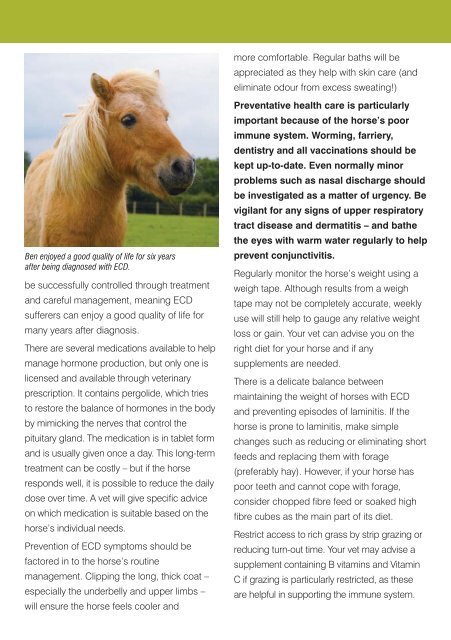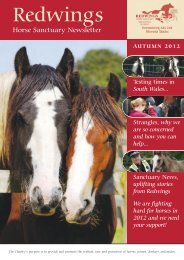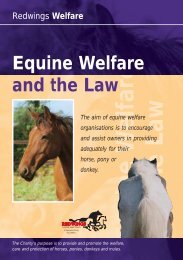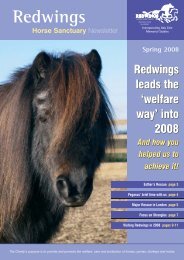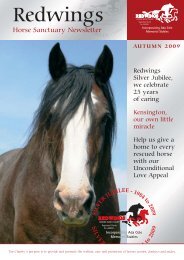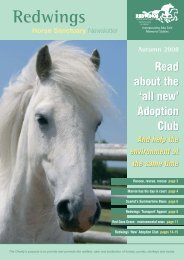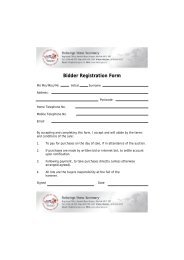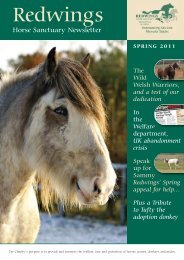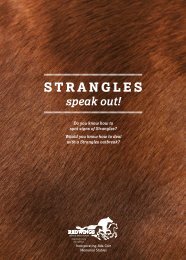Create successful ePaper yourself
Turn your PDF publications into a flip-book with our unique Google optimized e-Paper software.
Ben enjoyed a good quality of life for six years<br />
after being diagnosed with ECD.<br />
be successfully controlled through treatment<br />
and careful management, meaning ECD<br />
sufferers can enjoy a good quality of life for<br />
many years after diagnosis.<br />
There are several medications available to help<br />
manage hormone production, but only one is<br />
licensed and available through veterinary<br />
prescription. It contains pergolide, which tries<br />
to restore the balance of hormones in the body<br />
by mimicking the nerves that control the<br />
pituitary gland. The medication is in tablet form<br />
and is usually given once a day. This long-term<br />
treatment can be costly – but if the horse<br />
responds well, it is possible to reduce the daily<br />
dose over time. A vet will give specific advice<br />
on which medication is suitable based on the<br />
horse’s individual needs.<br />
Prevention of ECD symptoms should be<br />
factored in to the horse’s routine<br />
management. Clipping the long, thick coat –<br />
especially the underbelly and upper limbs –<br />
will ensure the horse feels cooler and<br />
more comfortable. Regular baths will be<br />
appreciated as they help with skin care (and<br />
eliminate odour from excess sweating!)<br />
Preventative health care is particularly<br />
important because of the horse’s poor<br />
immune system. Worming, farriery,<br />
dentistry and all vaccinations should be<br />
kept up-to-date. Even normally minor<br />
problems such as nasal discharge should<br />
be investigated as a matter of urgency. Be<br />
vigilant for any signs of upper respiratory<br />
tract disease and dermatitis – and bathe<br />
the eyes with warm water regularly to help<br />
prevent conjunctivitis.<br />
Regularly monitor the horse’s weight using a<br />
weigh tape. Although results from a weigh<br />
tape may not be completely accurate, weekly<br />
use will still help to gauge any relative weight<br />
loss or gain. Your vet can advise you on the<br />
right diet for your horse and if any<br />
supplements are needed.<br />
There is a delicate balance between<br />
maintaining the weight of horses with ECD<br />
and preventing episodes of laminitis. If the<br />
horse is prone to laminitis, make simple<br />
changes such as reducing or eliminating short<br />
feeds and replacing them with forage<br />
(preferably hay). However, if your horse has<br />
poor teeth and cannot cope with forage,<br />
consider chopped fibre feed or soaked high<br />
fibre cubes as the main part of its diet.<br />
Restrict access to rich grass by strip grazing or<br />
reducing turn-out time. Your vet may advise a<br />
supplement containing B vitamins and Vitamin<br />
C if grazing is particularly restricted, as these<br />
are helpful in supporting the immune system.


